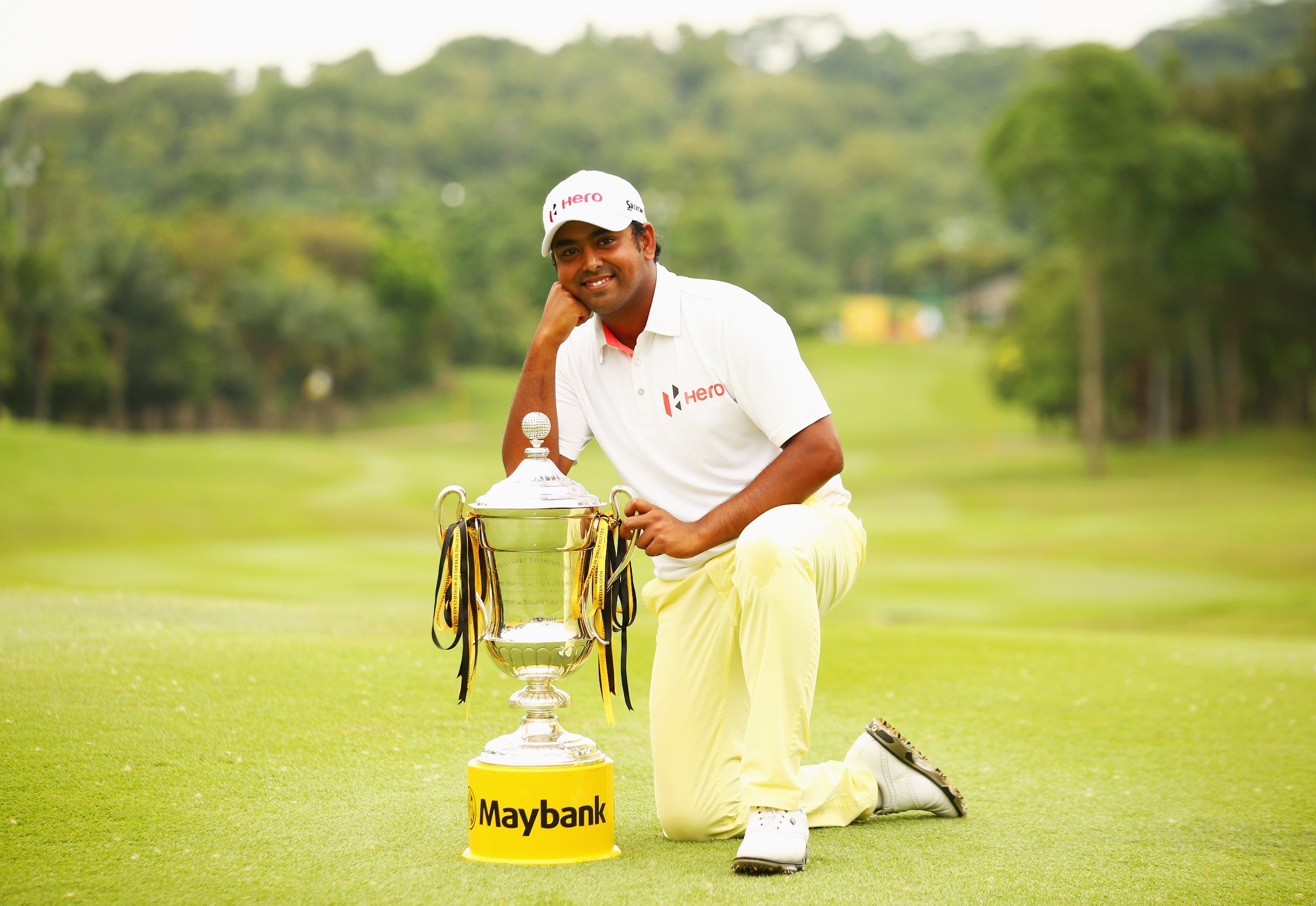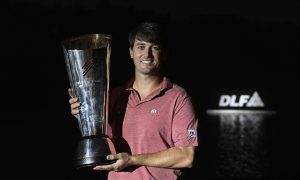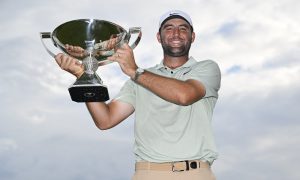RECAPPING THE STORIED HISTORY OF THE NATIONAL OPEN AND ITS MAJOR MILESTONES
By Malkeet Kaur
It was truly a sight for sore eyes when the Seagram Trophy, held with reverence, was ceremoniously carried into the ballroom of Kota Permai Golf & Country Club to the accompaniment of live gamelan music. Malaysian Golf Association (MGA) president Tan Sri Dato’ Mohd Anwar Mohd Nor triumphantly held it aloft before placing the polished and prestigious prize on the dais for everyone present to appreciate and admire.
Indeed, the display of the Seagram Trophy on the dais during a press conference last December signalled the welcome return of the Malaysian Open after a four-year hiatus. One of the most highly regarded events in the region, the 55th edition will see a modified platform as an event sanctioned by the Asian Tour in partnership with the Japan Tour Golf Organisation (JGTO). To be played at the award-winning Kota Permai course on March 5-8, the revived Malaysian Open will offer a total purse of US$1 million. Interesting historical fact – the Malaysian Open was the first national Open in Asia to offer a prize purse of US$1 million in 2002.
In its long and impressive history, the tournament had withstood countless adversities including several economic recessions. Until 2016 at least, when then title sponsor Maybank and the MGA, the custodian of the national Open, parted ways. Maybank had been the title sponsor since 2006 and the event was co-sanctioned by the European and Asian Tours since 1999. But with the dissolution of the partnership, the Malaysian Open was suddenly left adrift and lost after 54 years of continuity which made it one of the longest-running events in the world.
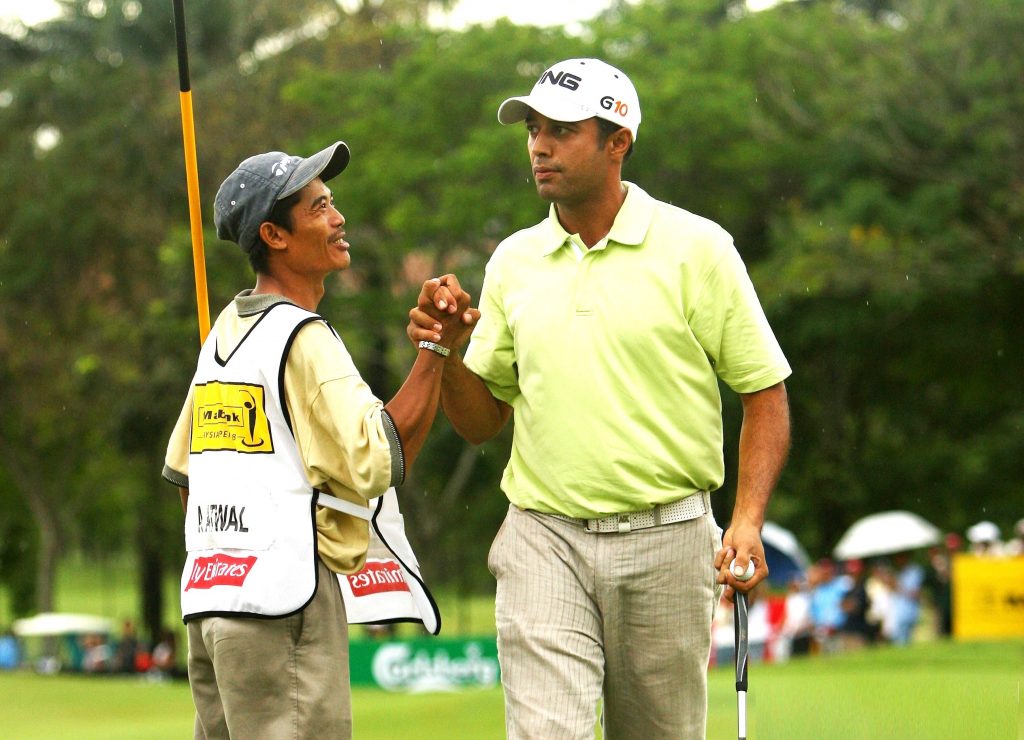
2008 – India’s Arjun Atwal claims his second Malaysian Open title in a playoff at Kota Permai (Photo by Andrew Redington/Getty Images)
Maybank meanwhile, together with Malaysian Open’s former event promoter, GlobalOne, inaugurated a new event, co-sanctioned by the European and Asian Tours, called the Maybank Championship. Ironically, some golfing fans assumed that this was the national Open … but with the return of the Malaysian Open this year, this misunderstanding should be effectively cleared.
Sponsors and Prize Money
When the Malaysian Open was inaugurated as part of the five-leg Far East Tour at Royal Selangor Golf Club (RSGC) in 1962, there were multiple sponsors including the House of Seagram who donated RM10,000 with RM6,000 allocated for a championship trophy and RM4,000 for the prize money. The other sponsors were Dunlop Malaysian Industries Berhad, Malaysian Tobacco Berhad and Straits Times Press. The total prize money was RM22,500 with another RM2,500 for the pro-am. The winner’s cheque, which went to Australian Frank Philips, was worth RM3,000.
In 1983, Benson & Hedges of London became the title sponsor of the Malaysian Open, a partnership which lasted until 2000. That year, Carlsberg was the presenting sponsor and the Danish brewery took over as title sponsor from 2001 until 2005. Maybank then took on the reins from 2006 until 2015.
In terms of the prize purse, there was exponential increment throughout the years until of course the scalding down with the national Open’s return this year. In 2006, when Maybank took over the sponsorship of the national Open, it became one of Asia’s richest golf tournaments with a prize purse of US$1.21 million. By 2015, the prize money had increased to US$3 million, one of the highest in the region. In that year, India’s Anirban Lahiri lifted the Seagram Trophy for his sixth Asian Tour title and first co-sanctioned title on the European Tour. The win propelled his professional career to great heights, and today, Lahiri plies his trade on the lucrative PGA Tour.

India’s Anirban Lahiri (R) won at TPC Kuala Lumpur in the last staging of the Malaysian Open before its four-year-hiatus (Photo by Ian Walton/Getty Images)
In the old days, the Far East Circuit, (later renamed Asian Circuit) was considered a stepping-stone to the more lucrative tours like the European and the PGA Tours. When the Asian Tour came onto the scene, it revolutionised professional golf in the region and initiated co-sanction affiliations with other tours. In 1999, the Malaysian Open became the first tournament in Asia to be joint-sanctioned by the Asian and European Tours, and prize money increased to US$750,000.
The Malaysian Open embraced these changes in the professional golf world and evolved into a significant event on the international golfing calendar.
American Pie
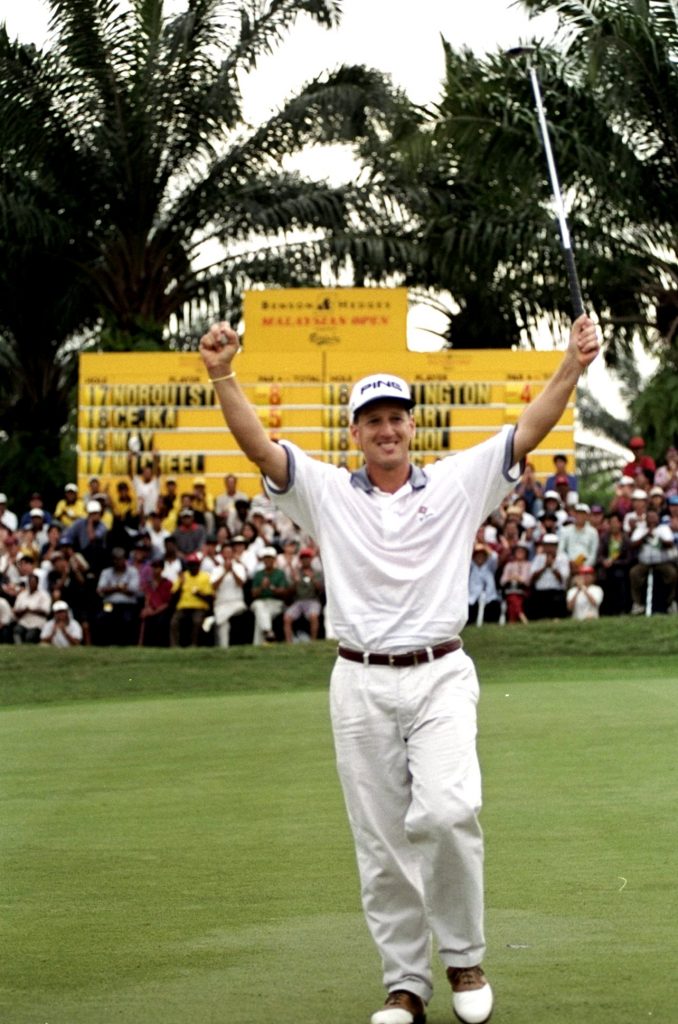
1997 – American Gerry Norquist wins his second Malaysian Open by three shots at Saujana (Photo by Stephen Munday/Getty Images)
Over the years, a couple of notable American golfers have played, and enjoyed success in the Malaysian Open such as Jeff Maggert (1989), Glen Day (1990), Steve Flesch (1996), and Gerry Norquist, who dominated the Malaysian Open in 1993 and 1999. Interestingly, the late Payne Stewart met his Australian wife at the Malaysian Open.
Norquist noted that playing in Malaysia brought the best out of his game. “I just always felt at ease and welcomed by the Malaysian people and my game clicked at the right time, I guess! 1993 was huge as it was my first win in Asia. Going head-to-head over the weekend against a world-class player like Vijay Singh gave me great confidence … that might have been my proudest moment as a pro,” he said.
“1999 was special not only because the win at Saujana was the first-ever co-sanctioned event with the European Tour and came with a two-year exemption, but also because I was able to share it with my caddy Lachimaya who was with me in 1993 at RSGC. ‘Maya’ caddied many events in KL for me and became like a brother. I will always cherish his friendship and calm nature,” added the five-time Asian Tour winner, who also won the Royal Perak Classic in 1995.
On the return of the event after four years, Norquist said: “I am happy for the Malaysian Golf Association and for Malaysian golf in general that the country’s national Open is back. I want a Malaysian to win this championship, and there are genuine candidates to do so! There is rich golf history in Malaysia and it needs to continue growing.”
Aussie Excellence
Australian legend Peter Thomson, a five-time British Open winner (1954, 1955, 1956, 1958 and 1965) was one of many celebrated players from Down Under who came to the Malaysian Open. The list also includes Greg Norman, two-time champion Graham Marsh (1974 and 1975), David Graham who was twice runner-up to Japanese Takaaki Kono in 1969 and 1971, Stewart Ginn, who took two Malaysian Open crowns in 1977 and 1986, and Terry Gale, the only three-time Malaysian Open winner in 1983, 1985 and 1987.
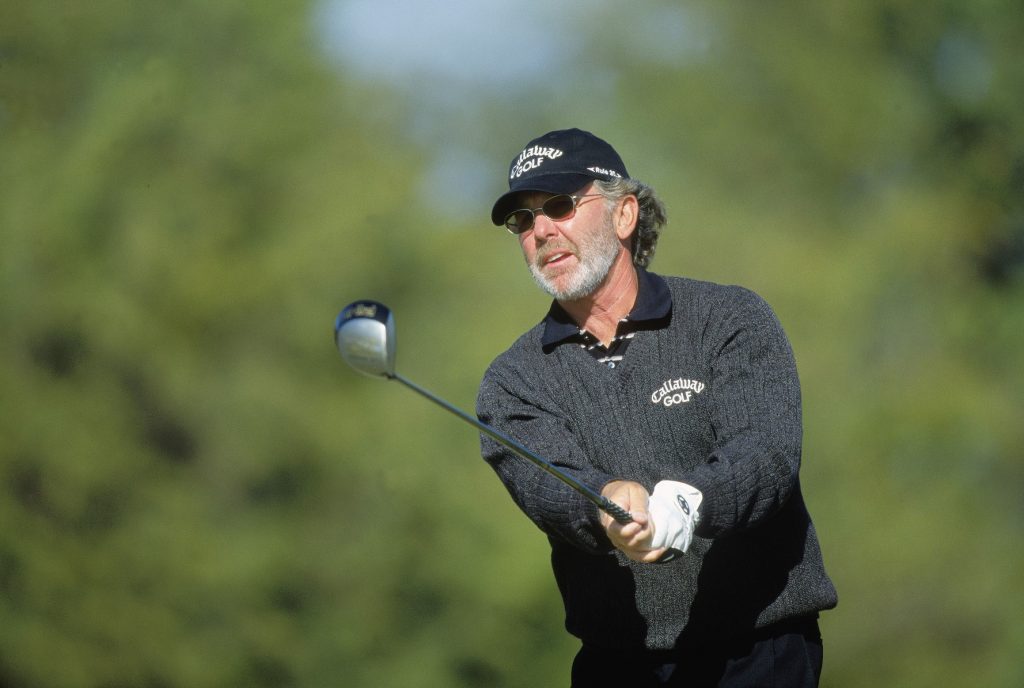
Australia’s Stewart Ginn is a two-time Malaysian Open champion, winning in 1977 and 1986 (Photo by Scott Halleran/Getty Images)
“The best memories are when you hold that trophy in your hand … but my fondest memory is when I shot the lowest round of 63 on the second day at RSGC in 1977. I play at the RSGC these days, and it brings back lots of fond memories,” said Ginn, who resides in Malaysia.
“I feel it means a lot for the country to have the Malaysian Open back, especially for golfers in Malaysia. It’s a big event for the younger players to play in and make a start in their careers,” concluded the prolific international winner, who counts one senior Major title in his resume.
International Parade
The Malaysian Open also had golfers coming from as far as the African continent. From South Africa came Harold Henning who hogged the headlines in 1966, and years later, his famous countrymen Retief Goosen, Charl Schwartzel, and Louis Oosthuizen, winner in 2012, thrilled golfing fans with their brilliant play … and not forgetting the famed player from their neighbouring country, Zimbabwean Mark McNulty, who won here in 1980.
Who can forget Vijay Singh, an ‘honorary Malaysian’, who lived and honed his game in East Malaysia and Johor, making some lifelong friendships along the way. The big Fijian won his first Malaysian Open in 1992 at Bukit Jambul in Penang and later returned as the reigning Masters champion to win in 2001 in a playoff with Ireland’s Padraig Harrington at Saujana.
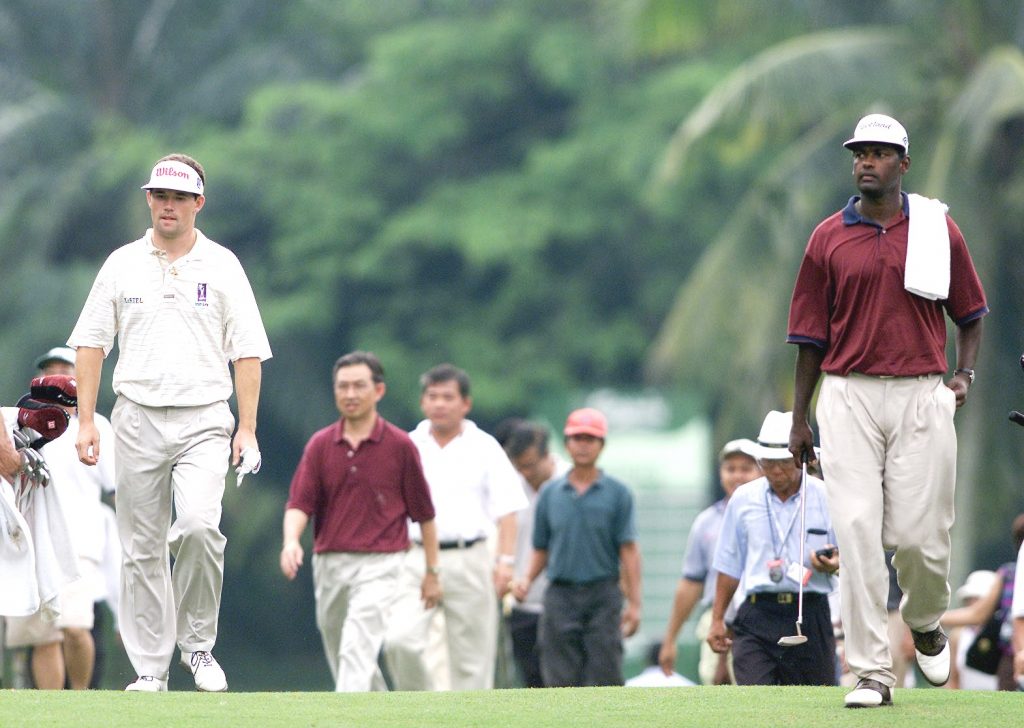
2001 – Clash of the titans as Vijay Singh (R) edged Padraig Harrington in a playoff at Saujana (Photo by Matt Turner/Getty Images)
In the early years, a Japanese player named Masashi ‘Jumbo’ Ozaki frequented the Malaysian Open with countrymen Tomoo Ishii, back-to-back winner in 1964 and 1965, and Takaaki Kano, also a winner twice in 1969 and 1971. Then came the Taiwanese invasion in the 1970s and 1980s, with players such as Hsu Sheng San (1976 champion), Lu Hsi Chuen (1979 and 1981), Lu Chien Soo (1984) and the Chen brothers, Tze Ming and Tze Chung.
England’s Lee Westwood, a fan favourite in Malaysia, won twice – in 1997 at Saujana and in 2014 at Kuala Lumpur GCC. But before Westwood charmed local fans, his compatriot Tony Jacklin descended upon Malaysian shores as a rising player and went on to win the British and US Open titles. Then there were the Irish, Ryder Cup former and future captains Paul McGinley, Darren Clarke and Padraig Harrington. The latter was runner-up twice in 2000 and 2001.
Multiple Venues
For many years, the Malaysian Open was held at RSGC until it started to move to other clubs in the country. The 41st edition in 2002 returned to what was once the ‘Home of the Malaysian Open’ for the 26th time, when the Seagram Trophy went to Alastair Forsyth who remains the only Scottish champion.
Over the decades, the other clubs which have hosted the Malaysian Open are Royal Perak Golf Club, Kelab Golf Negara Subang, Saujana Golf & Country Club, Ayer Keroh Country Club, Bukit Jambul Country Club, Templer Park Country Club, The Mine Resort & Golf Club, TPC Kuala Lumpur (then known as Kuala Lumpur Golf & Country Club) and Kota Permai.

2004 – Thai legend Thongchai Jaidee scored a hole-in-one in the final round en route to claiming the first of two Malaysian Open titles at Saujana (Photo by Stuart Franklin/Getty Images)
In the 2008 event at Kota Permai, Indian star Arjun Atwal won his second Malaysian Open title with the first coming in 2003 at The Mines.
In 2011, the Malaysian Open celebrated its 50th anniversary with players like 2010 British Open champion Louis Oosthuizen, 2011 Masters champion Charl Schwartzel, Ireland’s Rory McIlroy and, for the first time, the reigning World No 1 in Martin Kaymer of Germany. But it was Italy’s Matteo Manassero who hoisted the Seagram Trophy just two days shy of his 18th birthday, making him the youngest winner of the Malaysian Open.
The Thais have also enjoyed success at the Malaysian Open with Thongchai Jaidee winning consecutively at Saujana in 2004 and 2005. His compatriot Kiradech Aphibarnrat won in 2013, beating Italian Edoardo Molinari by one stroke at TPC Kuala Lumpur (formerly known as Kuala Lumpur Golf & Country Club).
All Malaysians will always remember 1994, as this was the year the late P. Gunasegaran nearly won the championship and make history as the first local to hoist the Seagram Trophy. Guna lost out in a three-way play-off to Swede Joakim Haeggman at the seventh extra hole. The other player who was in the three-way sudden-death decider was Frank Nobilo of New Zealand.
Here’s hoping that the 2020 edition will finally produce a local champion!
Malaysian Open Venues
The Royal Selangor Golf Club is the most prolific Malaysian Open venue, hosting the event on no less than 26 occasions. Saujana Golf & Country Club is a distant second with nine, followed by TPC Kuala Lumpur (formerly Kuala Lumpur Golf & Country Club) with seven.



